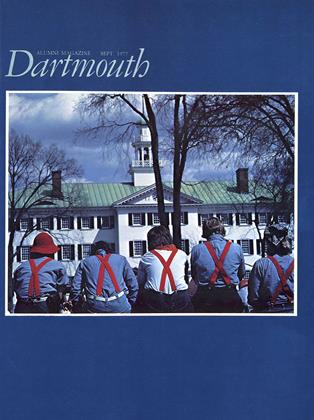The trouble with too many American antiques books is that they are like too many American antiques: frauds. Like the "married" highboy or the six-drawer chest refashioned into a more salable slant-top desk, our bookstores are a-litter with volumes whose pretty covers disguise clumsy, often dishonest handiwork. Maybe there should be a truth-in-publishing statute. Maybe honesty died with Hepplewhite.
Morton's book is pretty (as editor-in-chief of the art book firm of Abrams he should know something about publishing craftsmanship); it's big (measuring a foot square); it's expensive ($34.95); it's expansive (his South takes in the region from Baltimore to Texas); and it's as pleasing and honest as a piece by George Hepplewhite himself.
The popular, Yankee view of Southern life before the Civil War tends to be an image of goutish, goatish planters drinking and wenching amidst rococo decadence. (There is some truth to the myth: see The Secret Diaries of WilliamByrd of Westover.) But the formal furniture of Baltimore and Charleston is as classically pure as the best of Newport and Philadelphia. As proof, Morton has selected a splendid 18th- century mahogany bookcase, made in Charleston, that measures nearly 11 feet tall by 8 feet wide. It is shown in the context of a formal parlor, and, following the design motif of the book, on the opposite page there is a similar version shown in detail. (Design - by Ladislav Svatos - and careful color reproduction are among several attributes that set this book off from imposters.)
Morton moves easily from wealthy Tidewater to backcountry Piedmont to the South of King Cotton. He lavishes attention on wood and paint, silver (a magnificent pocket watch by Texas silversmith Samuel Bell), Moravian pottery, and West Virginia glass. In a section called "Objects of Utility and Commerce" there is a beautiful brass doorknob from Salem, North Carolina, some fine iron kitchen implements, a coverlet woven in a pattern called
"Tennessee Trouble," and a tradecard for "Green River, the Whiskey Without a Headache."
Then, toward the end, comes a section seemingly macabre but altogether fitting: the Artifacts of War. How Southern, how sad.
The book is modestly called a "broad-scale survey," but it is finer-grained, more handsomely crafted than that.
SOUTHERN ANTIQUES &FOLK ARTBy Robert Morton '55Oxmoor, 1976. 251 pp. $34.95
 View Full Issue
View Full Issue
More From This Issue
-
 Feature
FeatureScience and Technology Under Siege
September | October 1977 By Thomas Laaspere -
 Feature
FeatureThirty-Eight Days Alone
September | October 1977 By Ned Roesler -
 Feature
FeatureDartmouth Passages
September | October 1977 By Marshall Ledger -
 Feature
FeatureWorlds Together
September | October 1977 -
 Article
ArticleFanciers
September | October 1977 By BRAD HILLS '65 -
 Class Notes
Class Notes1927
September | October 1977 By ERWIN B. PADDOCK
D.A.D.
Books
-
 Books
BooksR. J. Lougee '27 is the author of Time
April1935 -
 Books
BooksMoral Sanitation
December 1916 By JAMES L. MCCONAUGHY -
 Books
BooksGENERAL ALARM: A DRAMATIC ACCOUNT OF FIRES AND FIRE-FIGHTING IN AMERICA.
NOVEMBER 1967 By JOHN A. RAND '38 -
 Books
BooksSOVIET-ASIAN RELATIONS Volume 2 of SOVIET-THIRD WORLD RELATIONS.
June 1974 By JOHN NELSON WASHBURN '45 -
 Books
BooksTHE DEVELOPMENT OF THE TREASURY 1660-1702.
November 1957 By JOHN R. WILLIAMS -
 Books
BooksDARTMOUTH SONG BOOK
April 1950 By JUD LYON '4O




